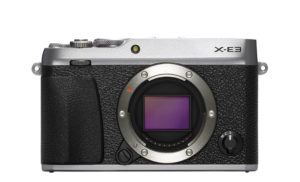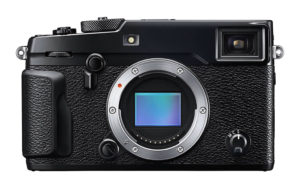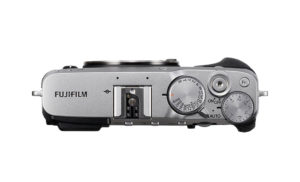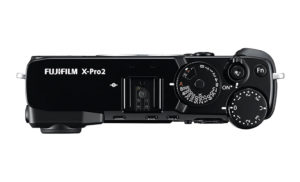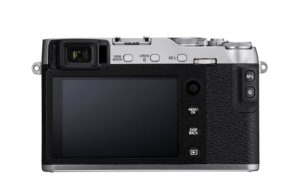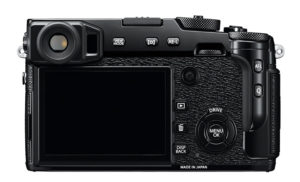If the X-T20 represents a more affordable version of the flagship X-T2, the new Fujifilm X-E3 can be considered the less expensive sibling of the flagship X-Pro2. These two separate branches – SLR and rangefinder – have much in common in terms of technology and features but differ in their design philosophy.
For instance, in addition to the different position of the electronic viewfinder, the SLR series (X-T) always has a tilting screen whereas on the rangefinder line-up (X-Pro and X-E), the monitor is always fixed. You may wonder why these differences exist and I believe it’s a simple question of appealing to the preferences of different types of users: there are those who like a viewfinder at the centre and those who prefer it to the side, just as there are users who enjoy a tilting screen and users who prefer a fixed one.
Here we dive into the “rangefinder” territory by comparing the more affordable X-E3 to the high-end X-Pro2. The new camera lacks some of the flagship’s unique features but retains many of the most important characteristics such as:
- the 24MP sensor, image processor and ISO sensitivity range (100 to 51200)
- hybrid AF with up to 325 points
- 4K video*
So without further ado, let’s have a look on how these two cameras compare!
*coming to the X-Pro2 via firmware update (4.00) in late December.
Ethics statement: The information supplied in this article is based on official specifications and our personal experience with Fuji products. If we get the chance to test the two cameras side-by-side, we will publish a full comparison. We were not asked to write anything about these cameras, nor were we provided with any sort of compensation. Within the article, there are affiliate links. If you decided to buy something after clicking the link, we will receive a small commission. To know more about our ethics, you can visit our full disclosure page. Thank you!
1. Weather sealing and build quality
The X-Pro2 comes with full weather sealing including splash, dust and freeze resistance down to -10°C. The entire body is made of magnesium alloy, unlike the X-E3 which only uses it for its top and bottom plates.
The X-E camera is smaller and lighter which can be an advantage for those who prefer to carry around a more compact body. You can find it in a black or silver finish. The X-Pro2, in addition to being available in solid black, also comes in a special Graphite version.
2. Button and dial layout
On top the X-Pro2 features a dual ISO/shutter speed dial with a lock/unlock button at the centre. The rest is identical including the hot-shoe, threaded shutter release button, Fn button and exposure compensation dial.
On the rear, both cameras include an AF Joystick but the X-Pro2 has an additional D-Pad with buttons that can all be customised with exception of the top one that commands the drive modes. On the X-E3, these four buttons have been replaced by the touch screen (more on this below).
The X-Pro2 features two additional buttons – one on the front where the viewfinder lever is and one on the rear for the Metering mode.
3. Dual SD card slot
The X-E3 has just one slot situated at the bottom alongside the battery. The X-Pro2 has two slots on the side and the first one is UHS-II compatible.

4. Hybrid Viewfinder
A unique feature of the X-Pro2 that it shares with the fixed lens X100 series is the hybrid viewfinder. Thanks to the front lever, you can switch between an optical and an electronic finder or activate the ERF (Electronic Rangefinder) in optical mode.
The OVF is a Reverse Galilean type with a field of view of 92%. The magnficiaton varies from 0.36x to 0.6x. The finder includes bright frames to indicate the actual field of view of the lens used and provide real time parallax correction.
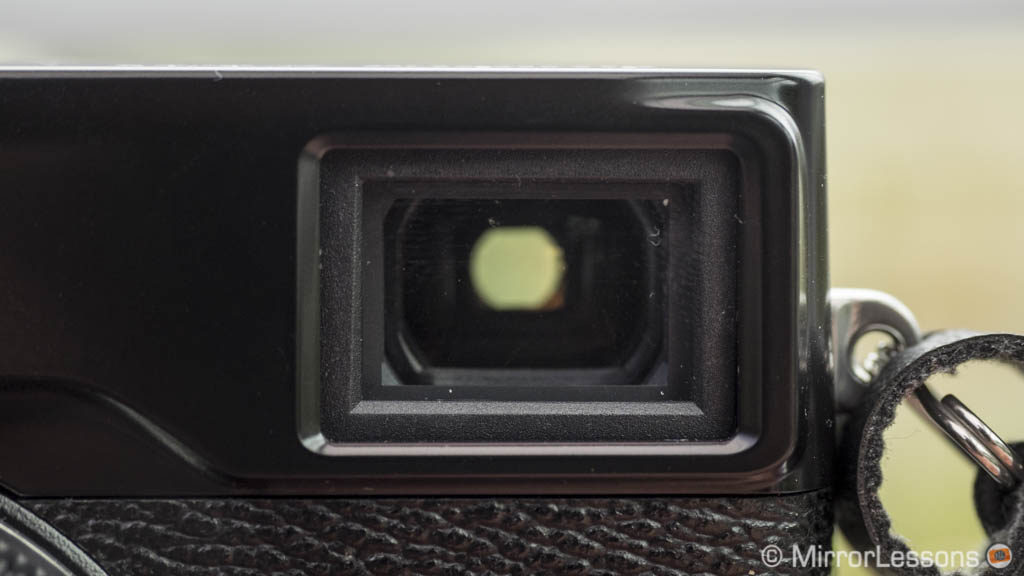
The EVF is a 0.48-inch TFT panel with 2.36 million dots, a 16mm eyepoint, a refresh rate of max. 85fps and a magnification of 0.59x.
On the X-E3, you only get an electronic viewfinder with slightly better magnification (0.62x) and an eye point of 17.5mm but it is smaller (0.39-inch) and the refresh rate is around 54fps.
5. Touch sensitive LCD
As already mentioned in the introduction, both rear monitors are fixed but the one on the X-Pro2 has more resolution (1.62 vs 1.04 million dots). The one on the X-E3 is touch sensitive however.
In addition to default actions like moving the focus point or taking a shot, the touch screen can be used to select settings. By swiping in four different directions (up – down – left -right) you can change the ISO, film simulation modes and other options just as you would with the D-Pad on the X-Pro2. These functions can be customised in the menu just like a regular function button.
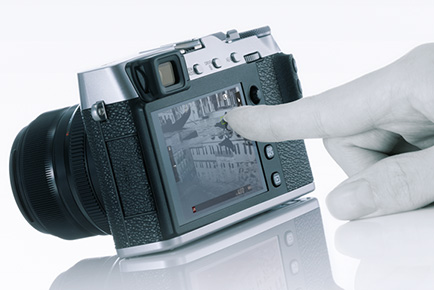
The touch screen can be used to move the focus point while composing with the EVF and you can select how much of the screen you want to be touch sensitive.
6. Shutter and speed
With the mechanical shutter, both cameras can shoot as fast as 8fps. In Low mode, which gives you live view and blackouts, the X-Pro2 can’t go faster than 3fps while the X-E3 can go up to 5fps. The new camera has another advantage: the electronic shutter lets you shoot at up to 14fps. The X-Pro2 has better buffer capabilities (83 JPGs / 33 RAW vs 62 JPGs and 25 RAW) however.
There is a difference in the fastest shutter speed as well: the X-Pro2 can go as fast as 1/8000s while the X-E3 stops at 1/4000s with the mechanical shutter. Activate the electronic shutter and both can reach 1/32,000s.
Another advantage of the X-E3 concerns the T mode – it can keep the shutter open for 15 minutes. It becomes a nice alternative to the Bulb mode which needs to be operated manually. With the X-Pro2, the T mode doesn’t exceed 30 seconds.
7. Bluetooth and Tethering
In addition to Wifi communication, the X-E3 can use Bluetooth to maintain a constant connection with the camera and download images automatically to Android and iOS devices.
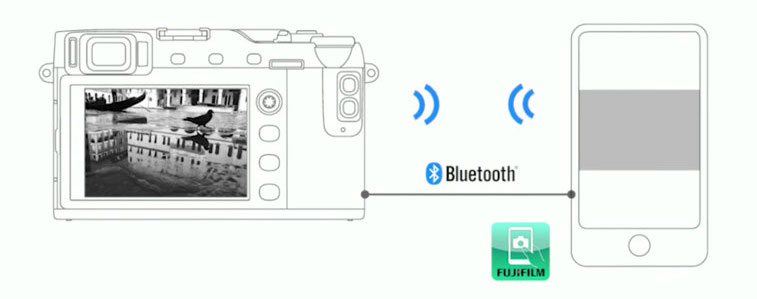
8. HDMI output
The X-Pro2 will soon receive 4K capabilities thanks to a future firmware update (December 2017), giving it the same specifications as the X-E3 . However it won’t be able to output that resolution in a clean 4:2:2 8-bit signal to an external recorder like the X-E3.
9. External flash
Neither cameras have a built-in flash but the X-E3 is supplied with the small EF-X8 in the box. The X-Pro2 doesn’t come with a flash unit.
10. Price
The difference in price is significant since the X-Pro2 sits at a higher level than the X-E3. The flagship camera can be bought for $1700 / £1350 / €1600 (body only). The X-E3 is much more affordable at $900 / £850 / €900 body only.
The X-E3 is offered in a kit with the XF 18-55mm or XF 23mm f/2, while the X-Pro2 can be found with the XF 35mm f/2 and XF 50mm f/2 as well.
Conclusion
The difference in price is significant and this is why the X-E3 might prove the more popular model amongst those seeking an affordable rangefinder-style camera from Fujifilm. At the risk of sounding repetitive (especially if you’ve read our other comparison previews about the new X-E3), the image quality and autofocus performance is the same, so if either of these aspects is your main concern, you can relax and focus on the smaller differences between the two models.
Although weather sealing, dual SD card slots and tethering are important, the X-Pro2 is primarily worth considering for its unique hybrid viewfinder, as it definitely gives you that sensation of being connected to the action that only a true optical rangefinder can give you. If you buy into that philosophy, this one-of-a-kind camera could be the ideal companion for your photographic needs.
Check the price of the Fujifilm X-E3 on
Amazon | Amazon UK | B&H Photo
Check price of Fujifilm X-Pro2 on
Amazon | Amazon UK | eBay | B&H Photo
Second-hand Fujifilm cameras on
You might also be interested in the following articles:

